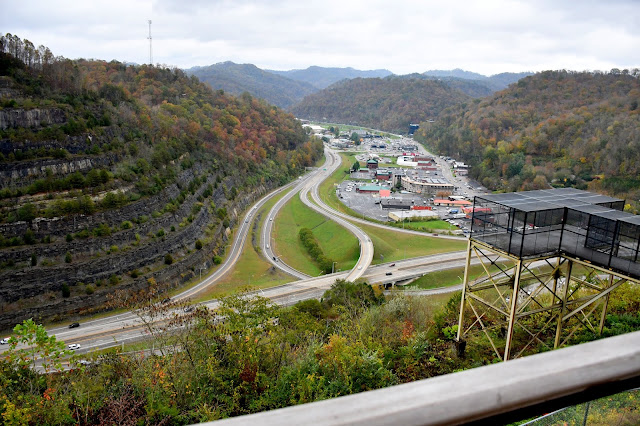Aquifer Pumping and Land Subsidence
There are always plenty of predicaments for me to write about, and this one is a real humdinger. While this particular one may not necessarily be as devastating initially as several other symptom predicaments of ecological overshoot, it makes up for it by causing much more serious trouble over the long haul.
Have you given much consideration to the consequences of pumping water from underground? In regions that are usually wet, these consequences have to do more with what kinds of minerals are present and how deep one has to drill to reach a good source of water. This also can predict the costs of operation to pump a certain amount of water to the surface. But what about areas that are arid or suffer from drought a large percentage of the year? What kinds of effects does pumping have on these locations?
When it comes to mining and/or extraction, one thing is ALWAYS true. There WILL come a day when what is being extracted will cease when the product being extracted depletes or becomes too energetically costly to extract. For instance, when extraction of a fossil hydrocarbon requires the same amount of energy to extract it that can be obtained from said hydrocarbon, there is no longer any benefit to extracting it. Water is different in that it is required for life whereas hydrocarbon energy is not. Hydrocarbon energy does, however, help extract water and is used in major pumping operations all over the world either directly (in gas or diesel pumping engines) or indirectly (in electric pumping motors).
As is always true in the extraction game, if the rate of extraction exceeds the replenishment rate, then at some point the product will become unextractable. Most aquifers in the Western US are depleting rapidly and land subsidence has become a rather serious issue; especially in California. One can check out this photo gallery to see different pictures regarding groundwater issues. Here is a recent study about land subsidence and the hazards which can be assessed due to groundwater pumping. In an update, this story appeared January 5, 2024, which tells the story of how powerful land barons want to defy state regulators who are attempting to enforce a decade-old law to limit groundwater pumping and the consequence of land subsidence.
I have mentioned frequently in this space that technology use is unsustainable because technology use is what supports civilization. Clarifying this means defining what kinds of technology use are required for civilization to exist. One common type of technology use is government. Without civilization, organized formal government isn't required because it can only exist once sufficient surplus energy is extracted by others to support said government. The people who form government are bureaucrats - they're bean counters effectively. Without the surplus energy available to form a government which levies taxes, fees, and provides the means for some form of legitimized currency and make laws (among other tasks), it simply cannot exist. Agriculture is another technology required to support civilization. Having some form of waterworks to provide potable water is necessary, along with some sort of sewerage to get rid of wastes. So, there ARE some forms of technology which existed before civilization and can be considered "sustainable" from the perspective of pre-civilizational existence and attached to those conditions (let's say being used by under one billion people globally). Still, when most people think of "technology," they don't often consider stone tools, clubs, atlatls, spears, bow-and-arrows, and/or other forms of simple technologies. So, for the most part, my statement that ALL technology is unsustainable fits with what most people think of technology being.
Now that I have clarified my statement, I shall add this article to my growing list of material that fits in with the scientific literature regarding civilization being unsustainable. Because (artificial) water systems are a necessary part of both agriculture and civilization, they are also necessarily unsustainable. We have natural water systems called rivers, streams, lakes, and swamps. These are sustainable. Built infrastructural systems are not. A large portion of the southwestern United States is going to discover this the hard way as drought continues drying the Colorado River system out. There will be respites here and there, as the constant atmospheric rivers hitting California now demonstrate. But even these are only temporary and will be unable to change the growing trend of higher temperatures drying the region out during the summer months.
The trouble with land subsidence is that it is fairly permanent - once the rock layers settle on top of each other, the land is going to be lower from that point forward. The consequences of this cannot be overstated, as flooding will become an ever-greater concern due to the water then having nowhere to go when the rains finally do come. The lakes, marshes, and swamps which once dotted the landscape were frequently drained and turned into farmland, towns, and cities, now sinking due to the subsidence, making the situation even worse since these lands were once a sink and have now sunk even lower.
Much can be learned from prior civilizations which collapsed due to overuse of natural resources (ecological overshoot), pollution loading, and other symptom predicaments of overshoot. This article discusses what caused collapse of the Mayan Civilization, but demonstrates parallels to modern society today, especially in arid regions where aquifer pumping and land subsidence is occurring. Once again, the overall reoccurring theme is dependence upon technology use and the societal blind spot that develops as a result.
That was more or less the subject I tackled in my article about bargaining and degrowth, where I had decided to revisit the topic I had investigated about 8 years earlier. During my initial discovery, I hadn't yet read some of the books (and studies) I have since completed. Still, it was evident even back then that most people had little idea of just how much degrowth was needed. At the time, I wrote it off as just another noble idea that didn't seriously take reality into consideration, just like most other approaches to overshoot. The one thing most promoters discount or completely ignore is the Maximum Power Principle, which one person observed in this way, quote: "Any well-intended initiatives that refuse to accept our deepest impulses will fail."
I originally wrote this article two years ago which critiqued a similar idea based upon a noble idea which can be too easily hijacked by the MPP. Despite this, I still support degrowth for the fact that people will be required to learn how to live with less and how to be more flexible in their living arrangements, regardless of whether doing so is done voluntarily or not. Energy and resource decline and collapse will force society to adopt degrowth, one way or another. It is easier to learn things now while abundance is still relatively high. While adopting degrowth won't provide any actual guarantees, it will certainly teach one how to live more frugally and community-oriented, making life much easier when that type of life is forced upon us.
This all brings about a recent article that provides a reality check. I have frequently said that we are no smarter than yeast, and this article explains precisely why. It isn't about individual humans, but about our species collectively. Until next time, don't postpone your joy - Live Now!











This article made a huge impression on me when I read it a couple years ago. Corcoran, in the so-called Bread Basket of the World, sunk almost 12 feet in a little over a decade:
ReplyDeletehttps://www.hcn.org/articles/south-water-the-central-california-town-that-keeps-sinking
Another favorite topic that often haunts me is Liebig's Law of the Minimum. For want of a nail, eventually the battle is lost.
ReplyDelete